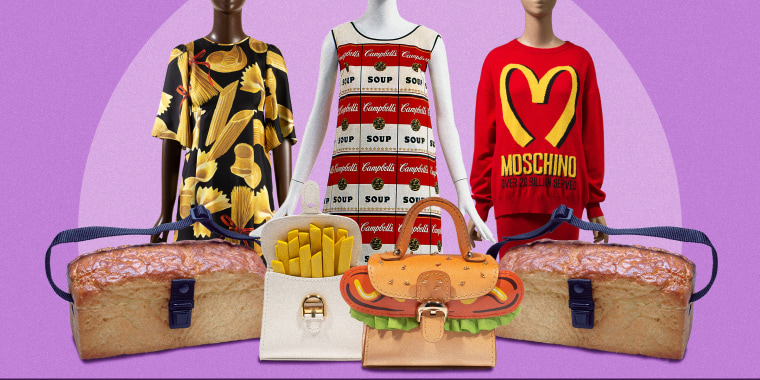As I descended a staircase and walked into an intimately lit and austere exhibition space in Manhattan’s Chelsea neighborhood, I turned and first saw a pair of playful prints donning two exuberant high-fashion outfits.
One, a cherry print dress from the 2023 resort collection of Wes Gordon for Carolina Herrera, looks suited for summers spent with a picnic basket and new romance; the other, a dress, bag and puffer coat with an all-over pasta print by Rachel Antonoff I instantly recognized.
The Parker Pasta Puffer was everywhere at the beginning of this year, and whether you saw it in real life or on your social media feeds, it likely brought a smile to your face.
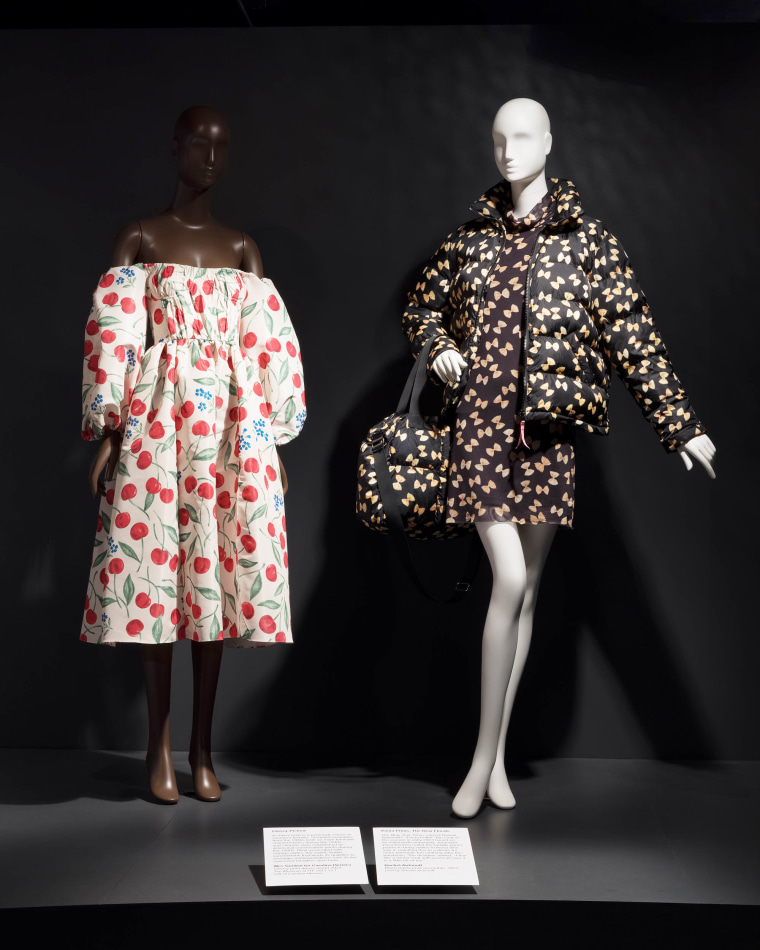
Dubbed the “it” coat by the New York Times earlier this year, the $425 chronically-sold-out piece of outerwear is the epitome of food and fashion marrying to create the ultimate way to wear your heart on your sleeve — if your true love, of course, is pasta.
The Museum at the Fashion Institute of Technology’s show “Food & Fashion” is running from Sept. 13 until Nov. 26, and ahead of its opening, I got to take a peek at what would be a truly spectacular fashion foodie’s closet. And while both food and fashion are vast subjects on their own, when they meet, they embody a third institution: culture.
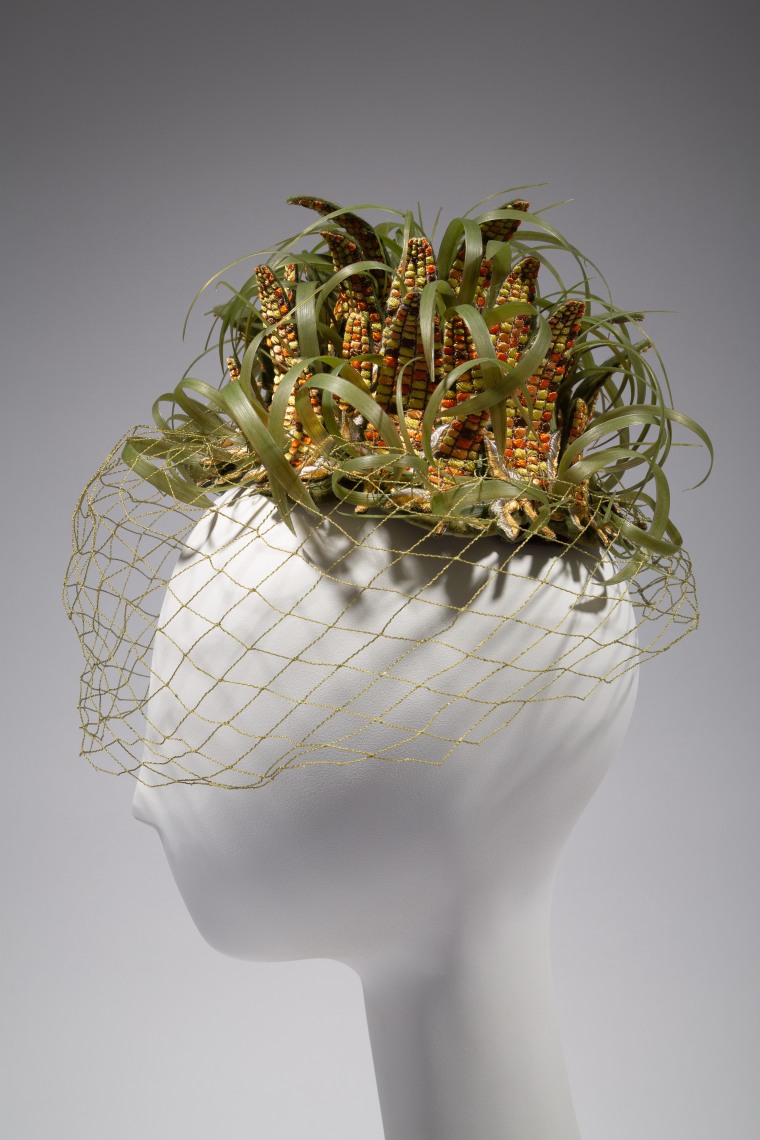
“This intersection has existed since people have been creating material culture — but we start our story in the 18th century,” Elizabeth Way, associate curator of costume at the Museum at FIT, tells TODAY.com over Zoom ahead of the show’s opening.
The exhibition, co-curated by Way and Melissa Marra-Alvarez, curator of education and research at FIT, opens while everyone from Naomi Campbell to Ice-T’s daughter Chanel walk in New York Fashion Week blocks away.
In a place where the season’s trends are cemented by designers, food again made an appearance for Spring 2024 — in the collections of both Chanel, who transformed a diner in Williamsburg into Lucky Chance Diner in honor of a pair of fragrances, and Michael Kors, who featured a new golden baguette-style bag.
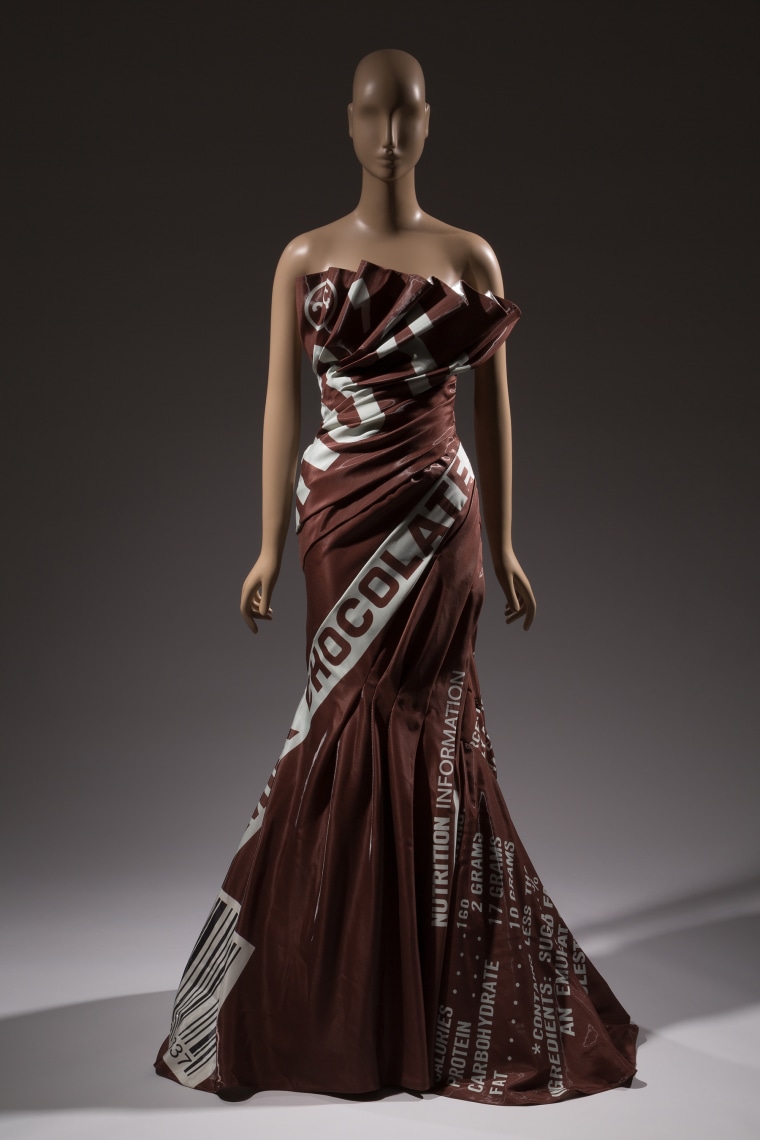
These luxe, French-inspired moments are just indicators of a long tradition in delectable fashion.
“Think about Louis XIV and how he was really building a luxury based export economy for France,” Way says, adding that the French monarch is largely credited with igniting the fashion industry by making his country the capital of European fashion.

“At the same time we see this huge development in food, with new types of cuisines that were more focused on local flavors less than imports, so these two things were nurtured simultaneously and turned into big businesses and cultural exports,” she continues, mentioning the Sun King’s voracious appetite. “I would say up until very recently, the French have dominated Western culture as kind of the purveyors of high fashion and high food. So we started the story there.”
Indeed, in the show’s largest room are several pieces dedicated to the history of looking snatched, as the kids say, while eating a meal or entertaining. There is a silk tea gown by Fernande Burel from the 1900s that shows what a lady of the house would wear to receive guests in her own home, a Brooks Brothers evening suit from around 1907 with tails perfect for attending formal dinners and balls, and more.
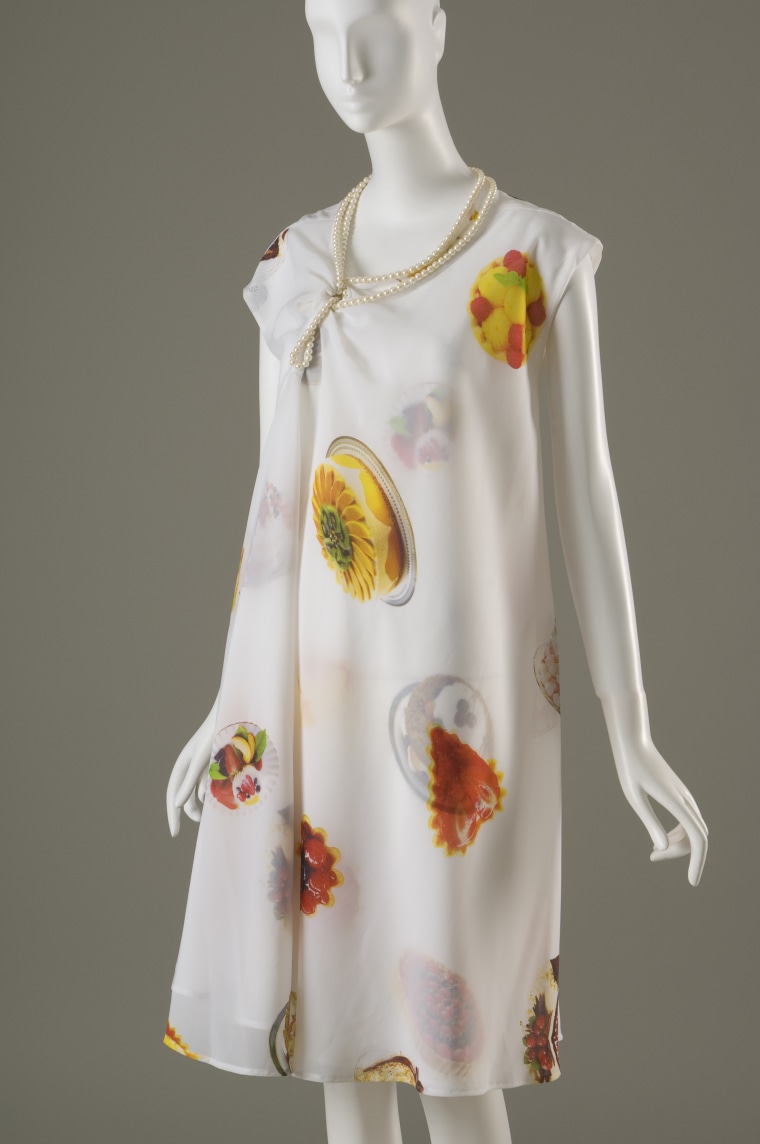
But it’s the oldest piece in the show, a silk damask robe à l’anglaise from 1765, that shows how long food has inspired designers.
“It’s a representation of fashion at that time, but the Rococo style, the textile, the colors and shapes transfer over into pastry,” Way says, pointing toward the often over-the-top displays the French used to — and still do — present desserts. “Illustrations of table settings with triangular pastry stacks mimic this triangular silhouette. We weren’t able to bring food into the gallery, but it is a representation of that time period.”
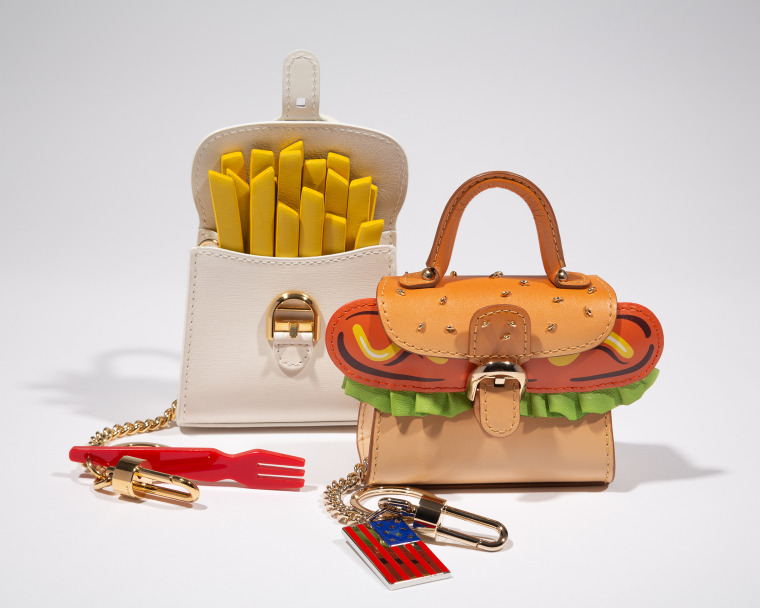
Still, as fashion moved forward in time and Gilded Age dinners gave way to glitzy cocktail hours and the Met Gala with Lil Nas X and Rihanna, food as inspiration persists (remember the Rihanna pizza memes?). Once clothing and culture became a little less stuffy, fashion truly began to play.
“Someone made the comment that food prints were ‘the new florals,’ which was something that really fed how we were thinking about the exhibition — it’s just fun wearing something that you love advertising to the world,” Marra-Alvarez tells TODAY.com. “I love pasta, I love avocados, you know, it’s very lighthearted, there’s a levity and whimsical newness to it.”
The highlights of the exhibition were when designers really threw caution to the wind and let their imaginations soar. There’s a beautiful Stephen Jones hat that looks as if someone slapped a peanut butter and jelly sandwich onto a models head, a blinged-out minaudière by Judith Lieber made to look like a doughnut with strawberry sprinkles touched by Midas, and a fried “Egg Menina Dress” and baguette headpiece by Spanish designer Ágatha Ruiz de la Prada from her Tribute to Surrealism collection.
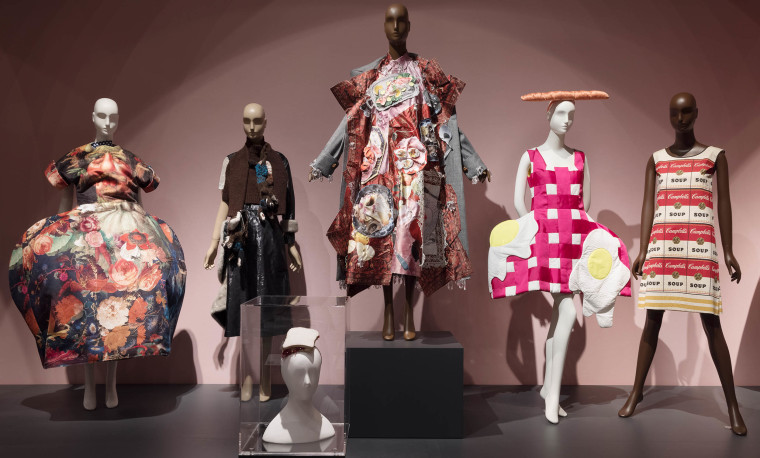
“There is this really strong connection between surrealism as it merges with fashion,” Marra-Alvarez says, calling attention to artists like Rene Magritte and Salvador Dali, who used food as subjects often. In fact, de la Prada’s hat looks very much like the one in Dali’s “Retrospective Bust of a Woman.”
“The Surrealists love to use food motifs and so this carries over and we see this really strong connection between the three,” Marra-Alvarez says.
Both Way and Marra-Alvarez say that most of the show is related to how food-based fashion has to do with one’s identity. Fast food, which is a part of all of our lives, is as much a motif in the show as any, with a couple of White Castle uniforms designed by it-bagmaker Telfar and an upcycled outfit made from old McDonald’s uniforms that I truly wouldn’t mind wearing to a fancy event.
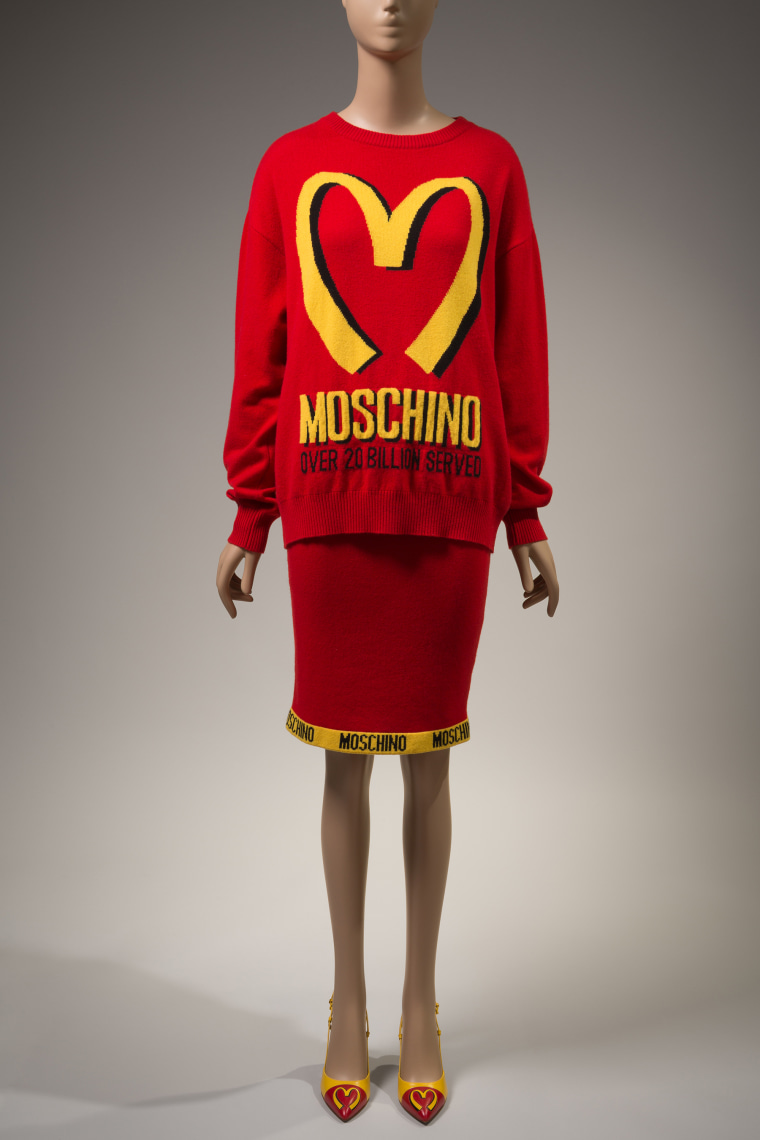
There are also a pair of pieces from Moschino’s Fall 2014 Ready-to-Wear collection based around the motifs of McDonald’s, Hershey’s, beer, popcorn and more, showing the high-brow-low-brow range of this trend.
“I think one of the reasons why it’s such an accessible way for designers to express their cultural identity is that it’s so so often we think about food as kind of the ambassador for a culture,” Way says, adding that several items in the show explore this through the designer’s own identity.
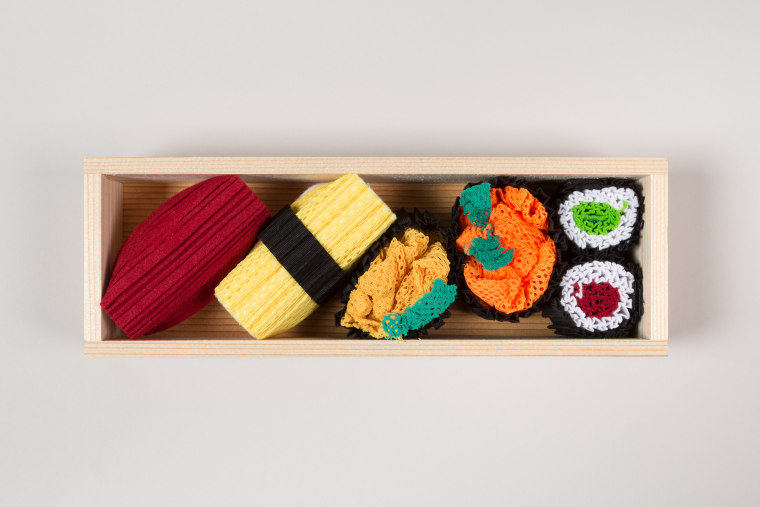
“Issey Miyake created this little bento box of accessories that he rolled into sushi and when you see sushi, you automatically think of Japan,” she says. “Tremaine Emory did a collection with Sky High Farm where he thinks about Black foods that he grew up eating in Jamaica, Queens: black beans and watermelon.”
All in all, the show — from banquets to burgers — shows that food and fashion frequently come together to express all of our identities.
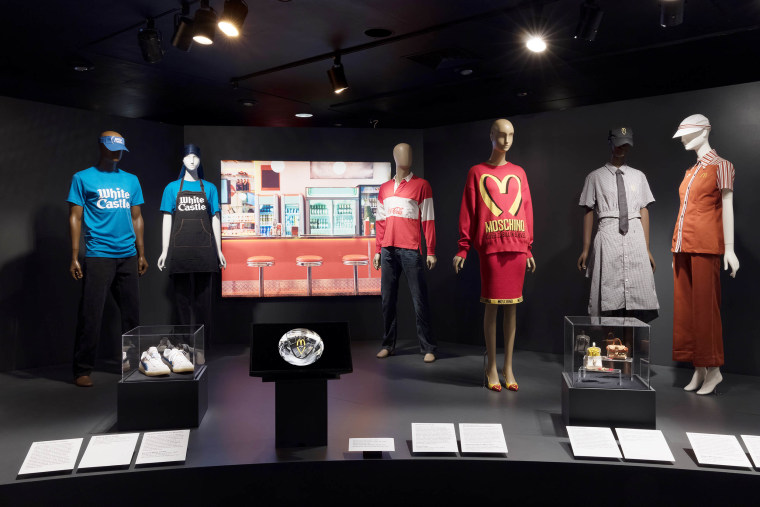
“For a very long time, food and fashion studies were dismissed as not serious academic areas of study,” Marra-Alvarez says. “I think what this exhibition will hopefully highlight is that it definitely is, because it’s the lens through which we can study culture, society and politics. It’s just so enmeshed in so many topics of our daily lives.”
“I think that’s a really important kind of takeaway, there are all these examples that are historical and that are fun, as well as serious topics like sustainability, activism and labor,” Way adds. “All of these are things we want our audience to think more deeply about, but also to go about their lives and think about the ways that food and fashion intersect in their lives and what it expresses for them.”
